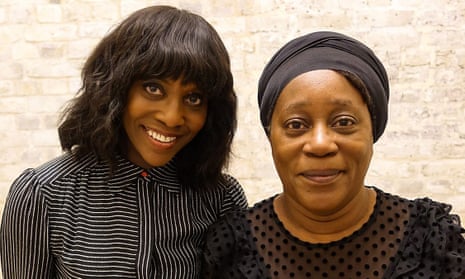Here’s an astonishing fact. Buried in cold storage at the Cartwright Hall Art Gallery in Bradford is a collection of art you have never seen, by a bunch of major British artists you’ve never heard of. This small gallery contains a hundred more works by British artists of African and Asian descent than the Tate’s national collection. Without it, the story of British art is a whitewash.
“If these works are not captured in public collections there’s going to be a serious distortion of history,” is how Cartwright Hall’s senior curator, Nima Poovaya-Smith, puts it in Whoever Heard of a Black Artist? Britain’s Hidden Art History (BBC Four), and it is worth noting that it took a curator of colour to make it happen. This fascinating, moving film (it made me cry, which is not something that can often be said of BBC Four art documentaries) is a powerful reminder of how easily history can be erased. It sets out to fix the distortion, the result of what artist Sonia Boyce describes as “a mass systemic amnesia” in the art establishment. Racism, to be clear.
Presenter Brenda Emmanus follows Boyce as she prepares to launch an exhibition of black and Asian modernist art at Manchester Art Gallery. The film opens with archive footage of a group of artists in the 1980s discussing the denial of their very existence. “I was told by my lecturers that there was no such thing as black art”; “Black people don’t make pictures”; “Whoever heard of a black artist?”. All of which reminded me of what I was told, both explicitly and implicitly, growing up in those years when being arty and brown-skinned at the same time was unthinkable and then, on the rare occasions when it did happen, unmentionable. The short answer to the question of whoever heard of a black artist is “no one”. Not even those of us who might have wanted to be one.
Yet, when Boyce spent three years scouring public archives she found more than 2,000 works in 30 collections. The first wave came from the Windrush generation, arriving “with a huge sense of optimism”. We don’t need history to remind us how that worked out: we are seeing how they are being treated now. Emmanus meets Althea McNish, the first successful black female artist in Britain. A grand dame who lives in Tottenham, north London, she is as fabulous as her mid-century textiles, which were snapped up by Liberty, Balenciaga and Dior. She recalls visiting wheat fields for her signature piece, Golden Harvest (1959), inspired by the sugar cane fields of her native Trinidad. “The whole place excited me,” she says.
Or what about Frank Bowling, initially shown alongside David Hockney as a British pop artist before being deemed a bit too, well, Caribbean. Or Rasheed Araeen, a conceptual artist who is only now, in his 80s, getting his first comprehensive retrospective at the Baltic Centre for Contemporary Art, Gateshead. Heard of him? Me neither. Or Anwar Jalal Shemza, whose work obsessively examined the point where the square meets the circle, and who ended up as an A-level art teacher in Stafford. On Art UK, the public collections database, while Lucian Freud is richly described as British, English and German, Shemza is listed as Pakistani.
Boyce and Emmanus travel to a rural Cumbrian farmhouse where Li Yuan-chia, now recognised as the father of Chinese abstraction, lived and worked in the 70s. With zero support or recognition, he created an avant-garde museum in the middle of nowhere. The LYC Museum, which showed artists including Barbara Hepworth, is now a ruin, all cracked windows and warped LYC signage lying in the rubble. There is a point at which neglect goes beyond making you angry; it makes you sad. “It’s stunning … but really remote,” says Boyce, beginning to cry.
By the 90s, the overtly political work of the Black Arts Movement was out and artists such as Chris Ofili, Anish Kapoor and Steve McQueen were in: mainstream, commercial and not necessarily, or solely, framing themselves as black or Asian. This opened up a space for artists of colour, but it was also a time when it became unfashionable to mention race at all; when success meant assimilation, and being congratulated for not seeming black or Asian was an actual thing. A painful and insidious thing.
Last year, Lubaina Himid, who came up through the Black Arts Movement, became the first black woman to win the Turner prize. “It’s difficult for me to say the white art world is racist,” she says in footage from 1986. “I can’t look at it like that. I have to look at it as something that can be changed.”

Comments (…)
Sign in or create your Guardian account to join the discussion